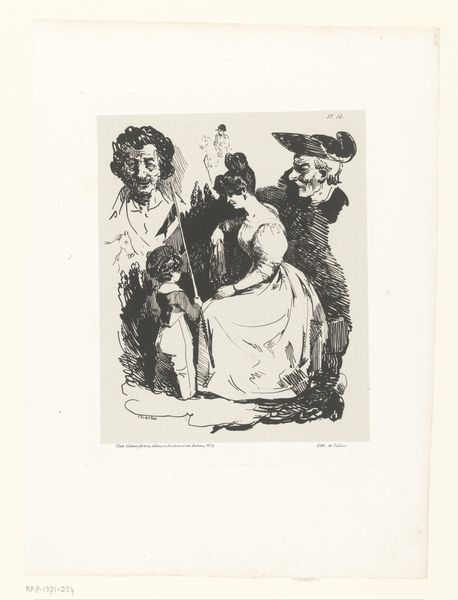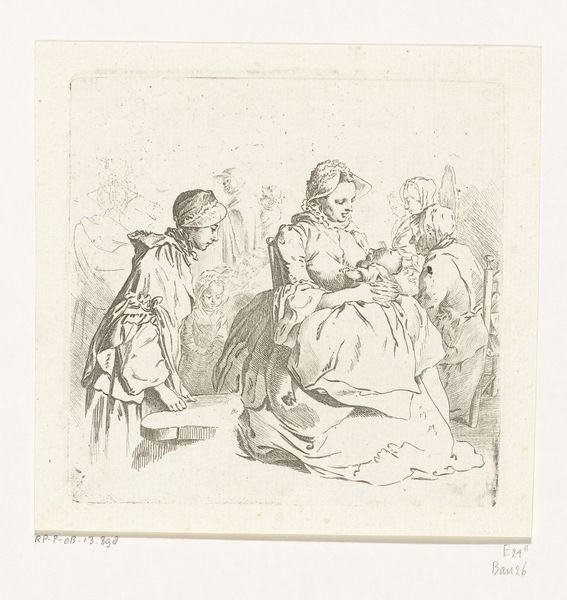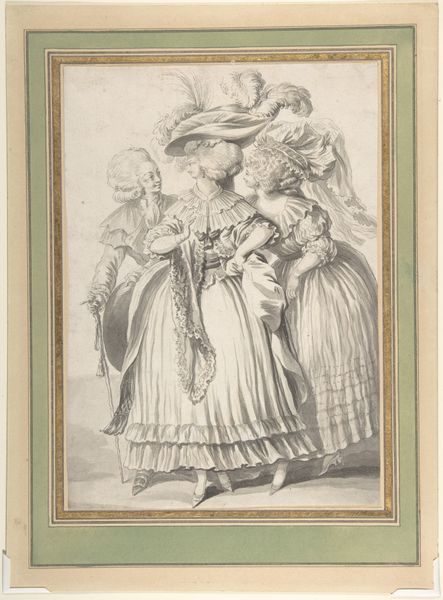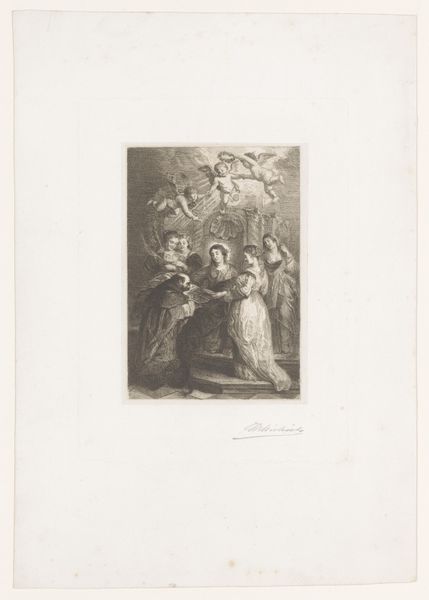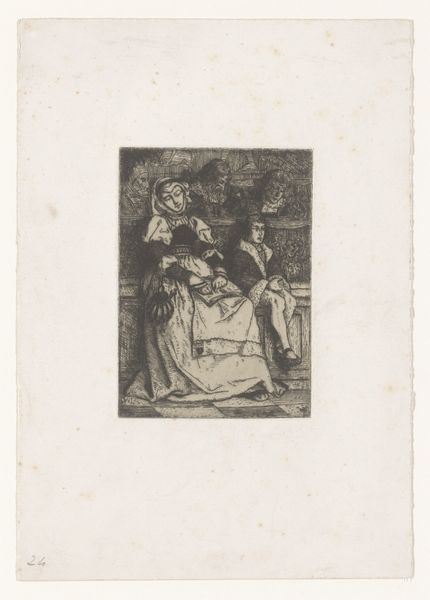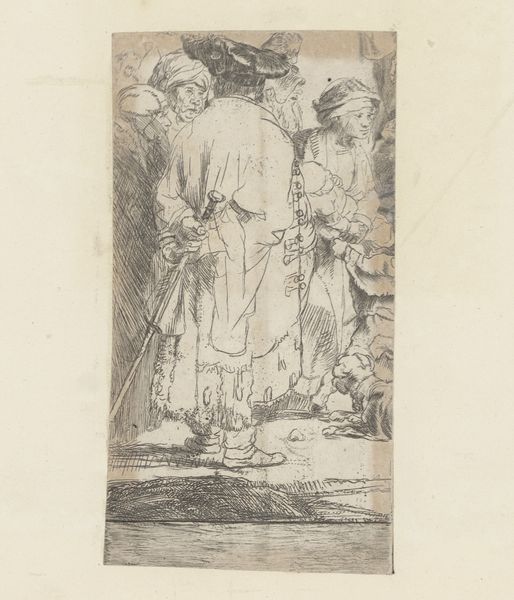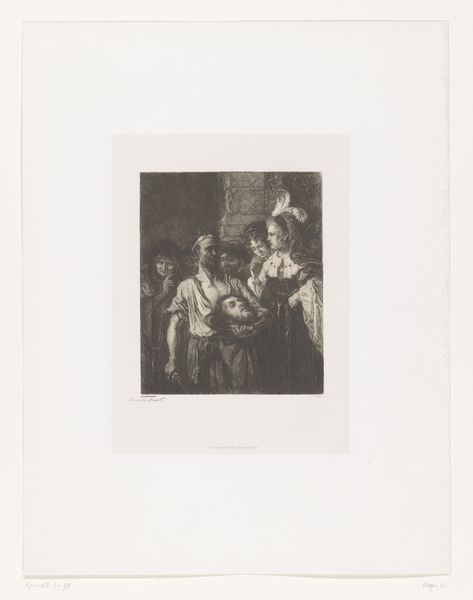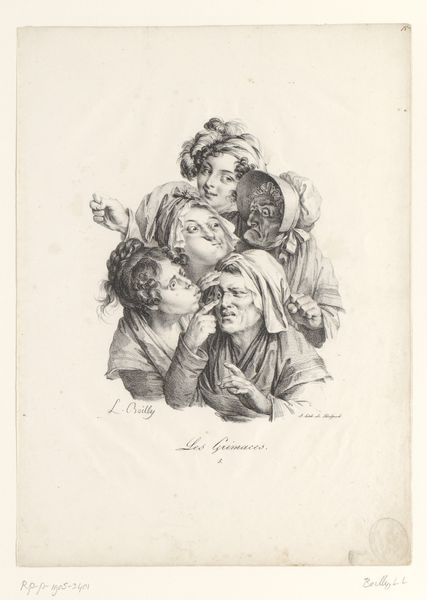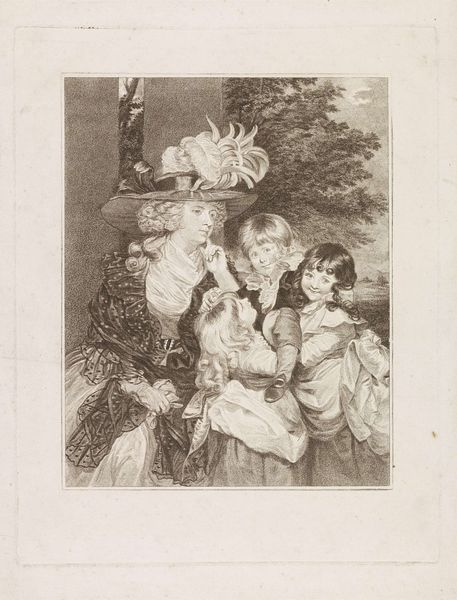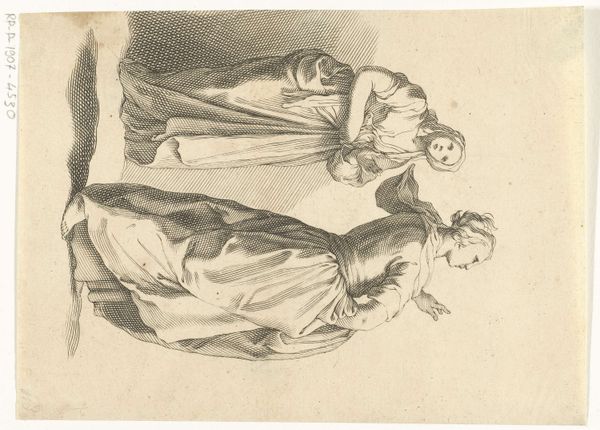
drawing, ink
#
drawing
#
fairy-painting
#
narrative-art
#
figuration
#
ink
#
academic-art
Dimensions: 160 mm (height) x 155 mm (width) (bladmaal)
Editor: So, this is an ink drawing from 1883, "Illustration til slutningen af eventyret 'Frisk Mod'," and the museum credits it to Anonymous. It depicts what looks like a scene from a fairytale, and it almost feels like I'm peering into a private moment of imaginative play. What’s your interpretation of a drawing like this? Curator: I think the very anonymity of the artist points to a fascinating aspect of art and its role in society. This illustration served a very specific function in its time – visualizing a popular tale. Fairy tales, though often seemingly simple, are incredibly important for transmitting cultural values and social norms. It's fascinating how this particular drawing uses ink to portray a scene laden with ideas about power, innocence, and imagination. Do you see how the artist uses the trappings of royalty – the crowns, the elaborate dress – to frame this narrative? Editor: Yes, it does seem that royalty plays a big part! Does the way that the characters are presented or positioned convey specific messages, like social standing or...perhaps aspirations of the time? Curator: Exactly! Think about who consumes these kinds of narratives. Are they intended for the wealthy or the working class? Who is meant to identify with whom? Notice the details – the age of the central figure, possibly a grandmother, suggesting the transmission of stories across generations, or the child embodying the hope of future generations. The picture suggests a desire of shared cultural moments and shared imaginary. And think of it as an image made in ink to be reproduced to wider publics. It begs the question, how has this function of images shifted with technological changes and what possibilities did it offer to people at the time? Editor: I see that! Thinking about this piece in terms of who it was made for and what it represented for them gives it so much more meaning than just the image itself. Curator: Precisely. It's not merely about the aesthetic appeal, but how the piece interacts with the socio-political forces of the time and engages with wider audiences. Editor: I will certainly look at other artworks differently after our conversation! It makes one think a lot more deeply.
Comments
No comments
Be the first to comment and join the conversation on the ultimate creative platform.
